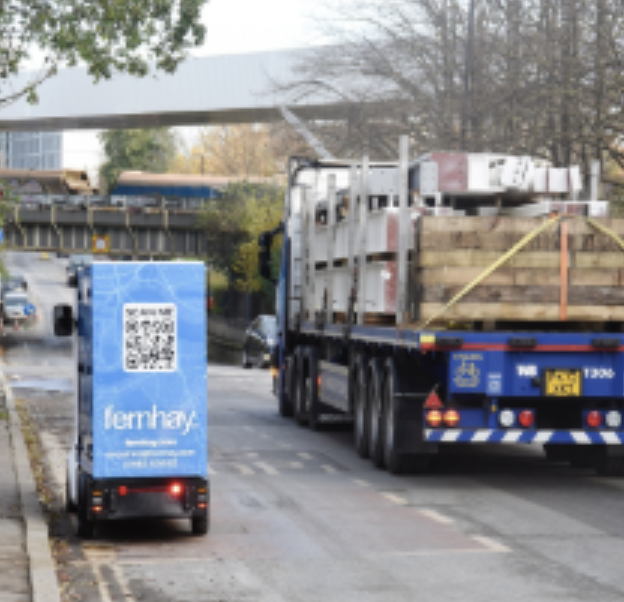Urban delivery has become increasingly complex as cities grow more congested, consumer expectations rise, and environmental concerns take center stage. Businesses face numerous challenges in last-mile logistics, from traffic congestion to sustainability requirements. To stay competitive, companies must adopt innovative strategies that enhance efficiency while minimizing their environmental footprint.
Understanding the Key Challenges in Urban Delivery
Traffic Congestion and Delivery Delays
One of the biggest obstacles in urban delivery is heavy traffic, which causes significant delays and increases operational costs. With more vehicles on the road, delivery trucks struggle to meet tight deadlines, leading to customer dissatisfaction and logistical inefficiencies. In highly populated cities, bottlenecks can result in delivery times stretching beyond acceptable limits, which in turn affects customer retention and overall business reputation. Addressing traffic congestion requires urban planners and logistics companies to work together in optimizing road usage, implementing smart traffic management systems, and promoting alternative transport solutions.
Rising Costs and Operational Constraints
Urban delivery comes with high costs, including fuel expenses, labor, and maintenance. Additionally, regulatory measures such as emissions restrictions and congestion fees further burden businesses. Companies must find cost-effective solutions that align with these regulations while ensuring timely deliveries. These costs are further exacerbated by unexpected surges in demand, such as peak shopping seasons or emergency situations, which require businesses to scale operations quickly while maintaining profitability. To combat these challenges, businesses must embrace cost-saving innovations, such as vehicle sharing programs, AI-driven demand forecasting, and dynamic pricing models that optimize resource allocation.
Sustainability and Environmental Concerns
Governments and consumers are pushing for greener logistics solutions. Traditional delivery vehicles contribute to carbon emissions, and businesses must transition to eco-friendly alternatives such as electric vehicles (EVs), cargo bikes, and optimized route planning to meet sustainability goals. Eco-conscious consumers are actively choosing brands that demonstrate environmental responsibility, making sustainable logistics a competitive advantage. Furthermore, regulatory bodies continue to introduce stricter emissions policies, further emphasizing the need for logistics firms to implement green initiatives such as carbon offset programs, renewable energy sourcing, and waste reduction strategies in their supply chains.
Last-Mile Delivery Inefficiencies
The last mile is often the most expensive and inefficient part of the supply chain. Failed deliveries, complex routing, and inadequate infrastructure can lead to wasted time and resources. Addressing last-mile challenges requires technological advancements and smarter logistics management. Failed deliveries due to recipient absence, poor address verification, or lack of secure drop-off locations contribute to unnecessary fuel consumption and labor costs. Businesses must implement predictive analytics, smart locker solutions, and flexible delivery scheduling to enhance last-mile efficiency. Additionally, investments in micro-fulfillment centers closer to consumers can further reduce delays and costs.
Innovative Solutions to Overcome Urban Delivery Challenges
Leveraging Technology for Smarter Logistics
Companies are increasingly turning to technology to improve delivery efficiency. Advanced route optimization software, real-time tracking, and automated dispatch systems help streamline operations and reduce delays. AI-powered logistics platforms analyze traffic patterns to provide the fastest and most cost-effective routes. Businesses can also utilize blockchain technology to enhance supply chain transparency, allowing real-time monitoring of deliveries, inventory, and order fulfillment. Autonomous delivery solutions, including self-driving vehicles and drone deliveries, are on the rise, providing promising advancements in urban logistics.
Micro-Hubs and Localized Distribution Centers
Decentralizing logistics with urban micro-hubs allows businesses to reduce the distance between warehouses and customers. These strategically placed distribution centers help cut down on delivery times and enable businesses to use smaller, more agile delivery vehicles. By partnering with local businesses and utilizing underutilized spaces as fulfillment centers, companies can maximize efficiency while reducing congestion in major metropolitan areas. Shared warehousing and dynamic inventory distribution ensure that goods are stored closer to demand hubs, improving order fulfillment speed and reducing transportation costs.
Sustainable Delivery Methods
To meet environmental regulations and customer demand for green logistics, businesses are adopting sustainable delivery methods. Electric delivery vans, bicycles, and pedestrian couriers reduce carbon footprints while maintaining delivery efficiency. Moreover, implementing packaging waste reduction strategies, such as reusable containers and biodegradable packaging, aligns businesses with sustainability objectives. Cities are also introducing dedicated green delivery zones, where only eco-friendly transportation methods are allowed, creating a cleaner and more sustainable urban logistics environment.
Crowdsourced and Shared Delivery Networks
Collaborative logistics models, such as crowdsourced delivery and shared networks, are gaining traction. By utilizing gig workers and optimizing shared transportation, businesses can achieve faster and more cost-effective urban deliveries. This model helps companies scale operations flexibly without the need for heavy capital investments in fleet expansion. Furthermore, crowd-shipping solutions, where independent couriers transport packages along their daily commutes, help optimize vehicle usage and lower environmental impact. Businesses can also engage in partnerships with ride-sharing and public transit systems to create hybrid delivery solutions that are both cost-efficient and sustainable.
The Future of Urban Delivery Efficiency
As cities continue to evolve, so must urban delivery solutions. Innovations in autonomous delivery vehicles, drone deliveries, and smart city infrastructure will further enhance efficiency. Businesses that proactively invest in sustainable and technology-driven logistics will stay ahead of the competition and meet the demands of modern consumers. Urban planning initiatives, such as dedicated delivery lanes, congestion pricing, and dynamic zoning regulations, will further contribute to streamlined logistics operations. Integrating IoT sensors, AI-powered demand forecasting, and machine learning algorithms into logistics planning will provide data-driven insights that optimize supply chains and predict delivery challenges before they arise.
Conclusion
The challenges of urban delivery are vast, but with the right strategies, businesses can navigate these obstacles and achieve efficiency. By leveraging technology, embracing sustainability, and optimizing logistics networks, companies can create a seamless and cost-effective urban delivery system that benefits both businesses and consumers. As new technologies and policies emerge, businesses that remain adaptable and forward-thinking will be better positioned to thrive in an increasingly urbanized world.

